by Sher Delva | Aug 31, 2017 | Addiction, Addiction Stigma, Drug Abuse, Mental Health, Stigma
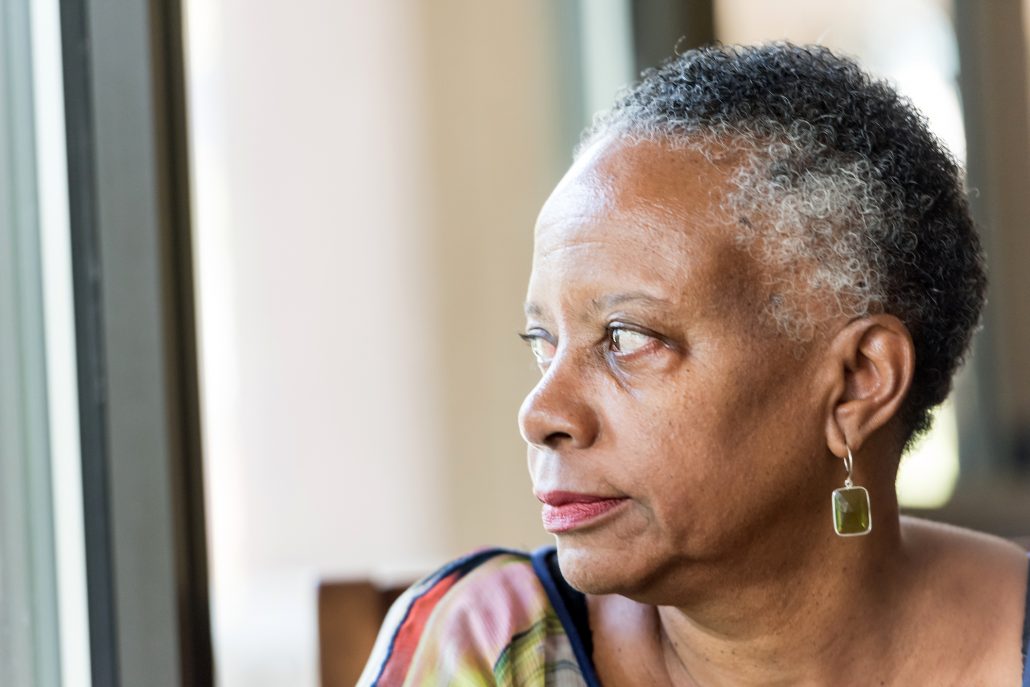
(This content is being used for illustrative purposes only; any person depicted in the content is a model)
The elderly population frequently is ignored when it comes to drug addiction. After all, when most people think of the word “drug addict,” they typically picture someone in their 20s and 30s. The media depicts addiction as mostly affecting youth. While it is true that the youth population is heavily affected, the middle-aged and elderly drug addiction rates are also rapidly rising.
Millions of older Americans receive painkiller prescriptions for chronic conditions such as back pain, arthritis, and headaches. Eventually, some of these older adults become addicted. Pain prescriptions are a serious problem, and it is important the elderly population receive the same attention as the younger population. Addiction does not discriminate. Everyone needs treatment.
Prescription pain medications can do just as much harm as heroin peddled on the streets. Even worse, when a patient is not able to gain access to their pain prescriptions, they often turn to heroin as a cheaper alternative. The heroin on the street is more dangerous because there is no way to know what is being distributed. Often, heroin on the street is laced with powerful opioids like fentanyl which increase a person’s vulnerability to an overdose.
The Middle-Aged and Elderly
The Agency for Healthcare Research and Quality reported a sharp increase in hospitalization from prescription drug abuse among Americans aged 45 to 85 and beyond. According to the Center for Disease Control and Prevention, the highest death rates from drug overdoses were reported among middle-aged adults between 45 and 54.
One study revealed that 20 percent of people over the age of 65 take painkillers several times per week. The rate of addiction among chronic pain patients is at an astonishing level of 18 percent. Dr. Andrew Kolodny is the chief medical officer of the Phoenix House Foundation. He explained in a recent article that the highest rates of overdose deaths are in patients who have legitimate prescriptions for managing their chronic pain problems.
Older patients are more able to find opioids because doctors are more willing to prescribe them. Dr. Kolodny points out that improperly using opioids increases the risk of dependence. Shockingly, if someone were to take several doses a day, physical dependence could occur in as little as five days.
Opioid Addiction from Painkillers
Older Patients taking pain medication are less likely to notice the onset of addiction. It’s typically the family or caregivers that begin to notice the changes in behavior. Often, these older patients are unaware that they are becoming dependent on opioids until a negative consequence occurs.
Furthermore, seniors on opioids are at a higher risk of falling, which increases the risk of devastating fractures.Because many seniors take several medications at a time, there is a potential for harmful drug interactions. For example, an opioid could interact with another drug like a sleeping medication and increase the risk of respiratory depression and sedation.
It is important that seniors have an understanding of this risk. If a patient has a history of alcohol use, it is critical that healthcare providers are aware. The enhanced effects of opioids combined with alcohol results in negative consequences. Nonetheless, one does not need to be a drinker to have a problem with opioids.
A Way Forward
The reality is that close to 50 percent of people age 65 and older deal with chronic pain. While it is important for doctors to address the pain of their patients, it is also just as important to inform patients of the risk of addiction when taking prescriptions opioids.
A journal review found that short-term prescriptions have less of a risk for dependence compared to long-term opioid treatment. While the risk for addiction lowers as a patient becomes older, there is still a risk. Doctors should review each case individually. Addiction is always a possibility with opioids.
There are a variety of alternative pain management treatments making headlines now. Pain management devices are one way that could help reduce opioid dependency. Many chronic pain sufferers also find that combining physical therapy with massage therapy helps reduce pain and improve mobility.
Other pain management options include
The statistics surrounding the middle-aged and elderly population are tragic, but even more tragic is the effect opioid addiction has on friends, relatives, and the overall community. Addiction affects everyone, not just the addict.
Overall, it is important that these age populations know the risk as opioid addiction rates continue to rise. Recovery is possible. Please reach out if you or someone you know is struggling with drug addiction. Do not wait. Call today.
CALL NOW 1-888-922-5398
by Sher Delva | Aug 30, 2017 | Addiction, Addiction Stigma, Drug Abuse, Mental Health, Stigma, Therapy, Uncategorized, Withdrawal
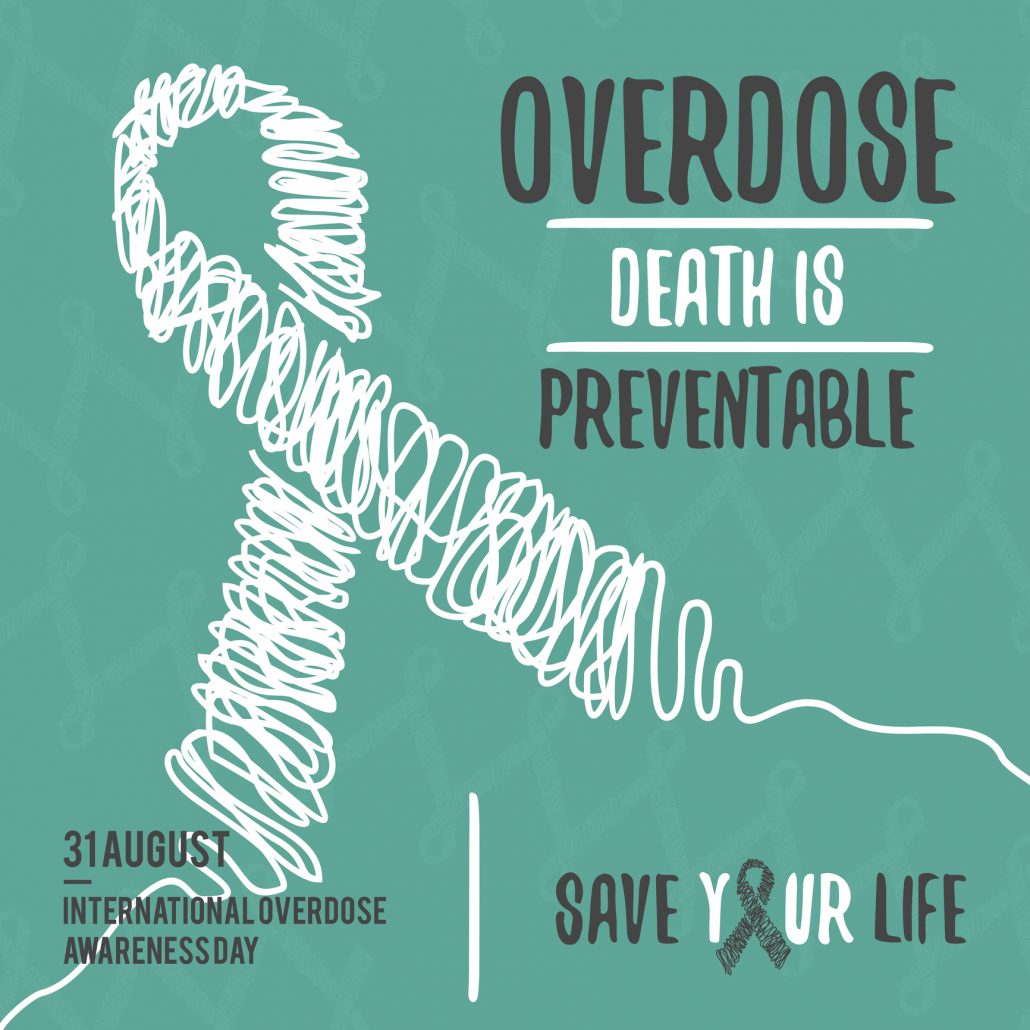
Today, August 31, marks International Overdose Awareness Day. The purpose of this day is to raise awareness and reduce the stigma of drug-related deaths. This day intends to acknowledge the pain and hardship felt by friends and family who have suffered the loss of a loved one due to a drug overdose.
International Overdose Awareness Day is a day that hopes to reduce the shame and guilt that is so often associated with addiction. The day aims to provide an opportunity for people to publicly mourn for loved ones without feeling guilt or shame.
International Overdose Awareness Day Focuses on:
- Giving communities information about fatal and non-fatal overdoses
- Sending a strong message to current and former drug users that they are valued
- Providing essential information regarding resources available in their community
- Raising a discussion about overdose prevention and drug policy
- Preventing and reducing harm by supporting evidence-based policies and practices
The Shocking Reality
Drug overdoses are the number one cause of preventable death in America. Today is a day to spread awareness to others about the disease of addiction. Addiction does not discriminate. It affects everyone.
The United States is facing a major drug epidemic.
Facts & Stats:
- The United States accounts for approximately one-quarter of the estimated number of drug-related deaths worldwide.
- Overdose deaths continue to rise, and these overdoses are driven by opioid use.
- Overdose deaths have more than tripled in the United States during the period of 1999-2015, from 16,849 to 52,404 annually.
- A recent report by STAT states the opioid epidemic is predicted to get a lot worse before it gets any better if it gets better at all.
- The third quarter of 2016, saw all drug overdose deaths peak at 19.9 cases for every 100,000 people, compared to the 16.7 in the same period last year.
- Another report found that the number of drug overdoses involving opioids between 2008-2014 was likely underestimated by 24%.
- Substances like fentanyl are close to 50 times stronger than heroin, and the increased presence of these opioid have significantly increased the number of opioid overdoses.
So what is an overdose exactly?
An overdose means taking too much of a drug or a combination of drugs for a body to tolerate. Overdose symptoms vary depending on the drug abused. Opioids, benzos, and alcohol all cause overdoses. These drugs slow down the nervous system which includes breathing and heart rate. Too much of these substances can kill or cause permanent brain damage to the user.
Signs of a drug overdose on opioids include:
- Shallow breathing or not breathing at all
- Snoring or gurgling sounds (this can mean that a person’s airway is partly blocked)
- Blue lips or fingertips
- Floppy arms and legs
- No response to stimulus
- Disorientation
- Unconsciousness.
If you think someone has overdosed, please seek help immediately. Not all overdoses happen quickly, and it can take hours for someone to die from an overdose depending on the severity. Naloxone, known by the brand name Narcan, is an overdose antidote that reverses an overdose from opioids.
Fight to Increase Access to Narcan
Narcan is now in the hands of first responders. It can be found in schools and even over-the-counter depending on the area you reside. Please look into where you can purchase and receive training.
If you know someone who has overdosed, show your support on International Overdose Awareness Day. Now, more than ever is the time to share the truth about addiction. We need to end the stigma.
How to Get Involved
There are a variety of resources available on the International Overdose Awareness Day website. The website has an area where loved ones can write and grieve anyone they have lost. These tributes are where many share the impact drug use, and overdoses have had on their family and friends. There is also an overdose awareness app that shares information on what an overdose is, and the main overdose symptoms. Please see the website for more information and to look for events in your local area.
—-
How are you going to raise awareness of International Overdose Awareness Day? The impact of addiction continues to influence the lives around us. Let’s end the stigma. If you are struggling with substance abuse, do not wait for it to progress into an overdose. We can help you get back on track. Please call toll free today. Do not wait.
CALL NOW 1-888-922-5398
by staff | Aug 24, 2017 | Addiction Treatment, Depression, Detox, Dual Diagnosis, Mental Health, Mood Disorders, Outpatient Treatment
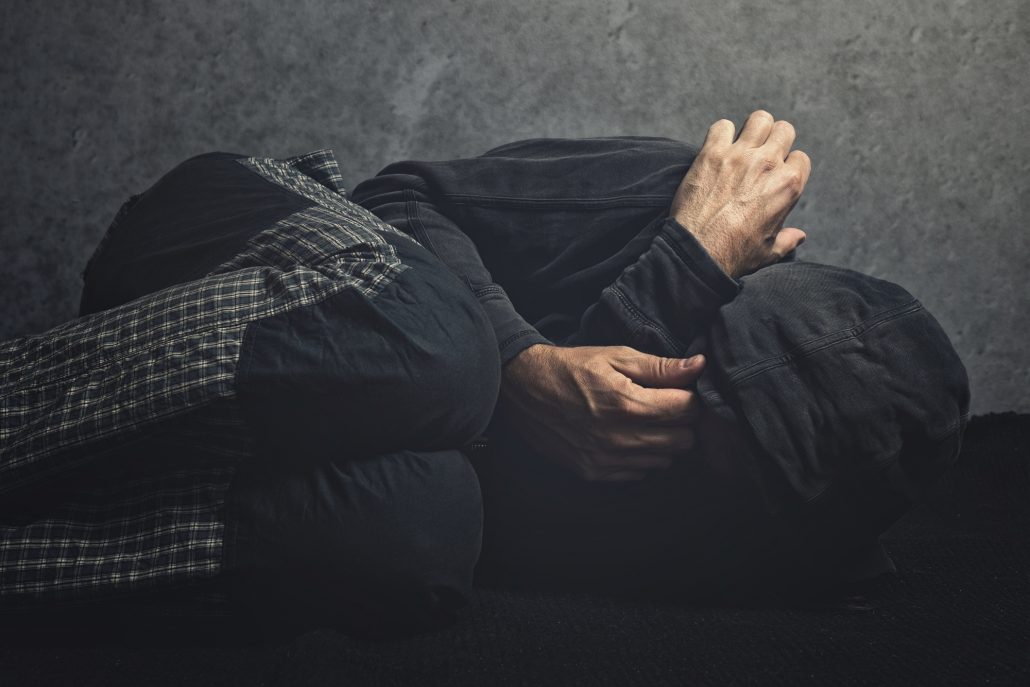
Holistic methods of drug and alcohol addiction treatment are so effective because they are designed to heal all the unique aspects of an individual’s life. This style of comprehensive care delivers empowering and personalized recovery strategies to help each person find their way to a lasting transformation. Holistic addiction treatment doesn’t just save a life; it helps people to discover a new quality of life in recovery.
Part of creating a customized plan of recovery means making a complete appraisal of the individual’s needs and how best to serve them in a healthy and productive environment. Part of the initial assessment includes what some refer to as the Addiction Severity Index (ASI).
Every program may not use the term Addiction Severity Index directly. However, an intake assessment is always a critical step toward a comprehensive treatment. So what is the ASI and why does it matter?
What is the Addiction Severity Index?
The ASI is a semi-structured interview with an individual seeking care for issues with substance abuse. The interview is designed to address seven potential problem areas relevant to substance use disorder in potential patients, including:
-
Medical status
-
Employment and support
-
Drug use
-
Alcohol use
-
Legal status
-
Family/social status
-
Psychiatric status
The input given by the individual is important because it helps providers determine the best way to engage in safe and effective treatment. All information gathered for the Addiction Severity Index is treated as confidential.
In each of the 7 areas, the individual will be asked to answer questions based on a 1-to-5 scale system. The individual will be asked how bothered they are by problems pertaining to each area. They will then be asked how important treatment is for them in those areas. The scale is:
1- Not at all
2- Slightly
3- Moderately
4- Considerably
5- Extremely
Of course each individual has the right to refuse to answer any question, especially if a topic is:
-
Considered too personal
-
Uncomfortable to the patient
-
Too painful/traumatic
If this is the case the individual should be instructed not to answer. While the individual should be made aware of the benefits of answering as many questions as they can in order to prepare a more comprehensive treatment plan, they should also be allowed to avoid unnecessary distress.
Ultimately, the Addiction Severity Index is typically used as a standard assessment tool for evaluating substance use disorder and determining treatment options. Having a higher score on the ASI can be an indication of a greater need for treatment in the listed areas.
ASI-Lite
According to the World Health Organization (WHO) the Addiction Severity Index, Lite version, also known as ASI-Lite, is a shortened version of the ASI. In other words:
- A typical ASI gauges problems within the previous 30 days and calculates a lifetime worth of information about problem behaviors.
- ASI-Lite contains 22 fewer questions than the ASI, and omits items relating to severity evaluations, and a family history grid.
The abridged version of the Addiction Severity Index is not an extremely uncommon method. It simply utilizes a portion of the data to outline treatment options.
Why Does it Matter?
While not everyone may be familiar with the term Addiction Severity Index, it is easy to guess as to why its important. When dealing with such a complex and intimate issue as substance use disorder the more information you have to build a foundation the better. This offers more potential to address every part of the problem. With a holistic addiction treatment program there is typically an intake process that helps clinicians and medical staff best understand the individual’s needs.
If the individual has struggled with legal, professional and/or financial issues, their recovery plan can be more focused toward how to overcome these adversities.
If they are dealing with a medical issue while trying to repair damage done to their personal and familial relationships they can build their plan around coping with these obstacles.
A complete picture like the Addiction Severity Index can be crucial when addressing dual diagnosis patients. In order to effectively address someone who may be struggling with a mental health disorder, such as clinical depression, while also dealing with addiction both co-occurring disorders must be simultaneously treated. If someone ignores one to focus on the other it frequently instigates a relapse of the untreated issue.
The point of evaluating the Addiction Severity Index and using holistic addiction treatment is to heal all parts of the person’s life; not just the addiction.
Palm Healthcare Company is proud to have some of the most trusted holistic drug and alcohol treatment programs in South Florida. Our innovative and personalized approach helps create lasting healing and comprehensive transformation. If you or someone you love is struggling with substance abuse or addiction, please call toll-free now. We want to help.
CALL NOW 1-888-922-5398
by Sher Delva | Aug 23, 2017 | Addiction, Addiction Stigma, Depression, Drug Abuse, Mental Health, Mood Disorders, Stigma, Therapy, Withdrawal
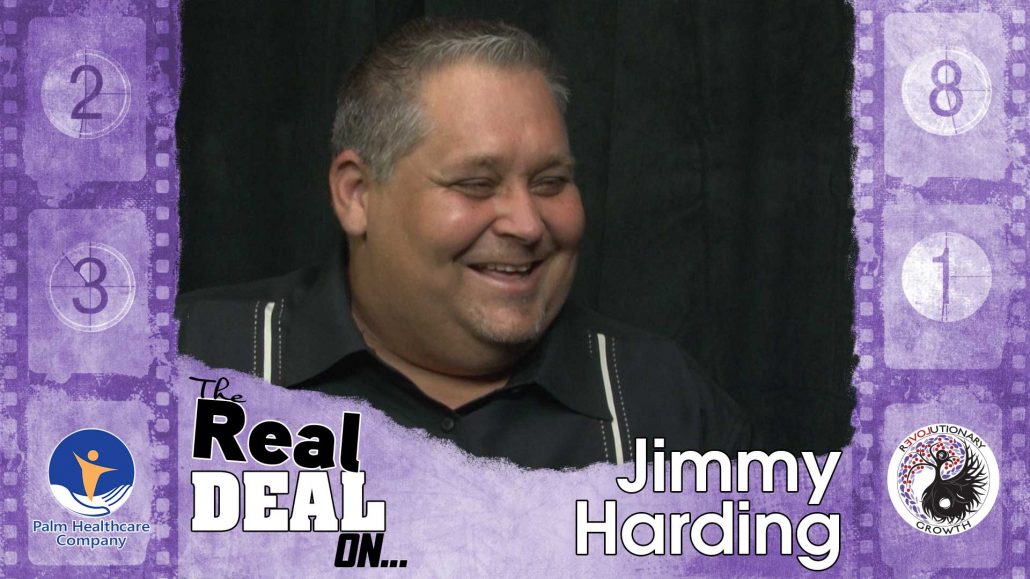
When Jimmy Harding was just ten years old, he started mowing lawns around his neighborhood for extra cash. During these early years, he acquired an entrepreneurial spirit that has carried with him ever since. Harding would spend the rest of his life developing his businesses and despite the ups and downs, achieve the personal freedom he always desired.
On an episode of The Real Deal On…, Harding sat down with Dug McGuirk for a conversation about reinvention. He discusses his business troubles and the pivotal moments that made reinvention possible in both his personal and professional life.
Harding started his career in construction, eventually becoming a construction mogul and dominating the industry. However, through a series of twists and turns, he fell into marketing. He is now a sought-after marketing guru who helps other businesses reach their full potential.
When it comes to reinvention, Harding has been through quite a few:
“I don’t believe there’s one reinvention per se. I think we go through a series of them,” he says.
Harding started his career in construction and grew his construction firm from the ground up.
“It started off as basically me and a helper and a pickup truck, and by the time that business got to its height, we were building like ten to twelve fast-food restaurants per year and then like a luxury home every single month on the residential side, so we really grew that thing up.”
During his time in construction, Harding learned valuable lessons.
Often, people place their failure on a lack of resources; however, Harding always knew the importance of being resourceful. Therefore, when he wanted to learn how to build a particular type of cabinet, instead of hiring someone to build it, Harding began working at a cabinet shop to find out how to build it himself.
“There was a particular type of cabinet that I didn’t know how to build and I went and got a job at a cabinet shop while I owned my own business just to learn how to build that so I can see the process, come back and use it in the project we were about to start,” he explains.
“There’s always a way. It’s just how do we figure it out. You can either pay someone to show you or you can pay someone to teach you to do it,” he continues.
Gaining Personal Freedom:
Ultimately, Harding’s goal was always to achieve personal freedom. Entrepreneurship was a vehicle to achieve that goal, he says. Over the years, he developed a passion for helping others achieve that freedom on their own. From the beginning, he always had a passion for helping others.
“I would go get my friends that would have you know $100,000 in debt from going to college, and they couldn’t even get a job. I’m like, ‘No, this is how you create your own economy,’ so I always would give people a hand up, people younger than me…,” he says
“That saying that it takes money to make money is B.S.,” he explains. “I’ve never had startup funding or whatever. Whatever I was going to do, I would go out and help other people, get paid for it, and use that [money] as the capital to start up my business.”
The Impact of Hurricane Katrina
Despite a struggling economy and weakening housing market, Harding’s construction firm continued to boom throughout the early 2000s. Then, Hurricane Katrina happened.
“All of a sudden, Hurricane Katrina comes along, and we’ve got 13 properties under construction, all in my name that I own,” he says. “We ended up having anywhere from like two to 13 feet of water in nine of the 13 properties, and it was pretty devastating. We had to recover from that and then there was a big need in the community.”
Despite the hurdles, Harding’s construction company thrived as they were able to help families rebuild their homes and contribute to the community in various ways.
“It was really a great time for us and contributing to the community, and we were rewarded handsomely for it because we helped like 87 people get back in their home,” he explains.
It was a hectic time. Families lived in FEMA trailers on the front lawn while their houses were being built, Harding says. The goal was to build these homes as soon as possible. Therefore, Harding’s company was able to grow and employ a lot of new people.
The business continued to boom for about 18 months; then suddenly things started to shift.
“It wasn’t that there was no need for any construction services but what happened is the stuff that we did or the stuff that we were capable of doing, was not available anymore,” he says.
Essentially, the only work left in New Orleans after 18 months was down to the most damaged stuff.
“If you were not a contractor that was set up to do 100 million dollar jobs like big infrastructure and improvement type of stuff, then it came down to very little left to be done,” he says.
Instead of changing his business model, Harding kept thinking things would get better. However, business started to dry up. He had to figure out what to do next. He remembered how heavily competing companies were advertising, so he decided to dive into marketing in an attempt to save his business.
This was the start of a costly journey to understand how marketing and advertising worked.
The last $100,000:
Harding’s quest to figure out why his business was declining led him into the marketing industry. He used the last $100,000 of his business finances to invest in advertising. He hired an advertising company to market his construction company to NFL games.
As a Saint Season holder, Harding thought the affluent market at these games would be a great place to gain new clients for his construction firm. He became the official construction sponsor for all the games. Unfortunately, the results were far from promising.
“The only phone call I got was someone else trying to sell me advertising,” he laughs.
“The first thing that I learned from that is that just because someone sells advertising doesn’t mean they know what they’re doing,” he says.
The experience taught Harding a lot about advertising. He realized the way he was marketing the wrong way.
“In advertising, you need two things: you have to be able to make an emotional connection, and it has to be intellectually interesting,” he explains.
Despite the lessons learned, his construction firm shut down.
“Eventually I ran out of money, and I had to shut it down and give the properties back and start struggling for survival,” he says. “It seemed like everything I touched just fell apart during that time, so that was a long struggle period like from 2008 until 2010.”
After his business went under, Harding decided to go on the road doing disaster cleanup. He had become an “expert on disaster cleanup,” and knew he had the tools to do the job. It seemed like the right direction to go.
“I said okay, I’m going to start going on the road and to these disasters and start doing our disaster cleanup and so I learned a lot of stuff at that time,” he says.
At first, Harding would knock on the doors of residents who had gone through a disaster and offer his services. He learned quickly that this was not the most efficient strategy. Soon, Harding began educating people on how to respond and react to disasters. He created educational brochures to hand out to people and acquired clients through becoming an expert in the field.
“When they would call me, I would go to their house, and I would expand on that education, and so really I was just consulting with them. I was helping them, and like people were literally just pulling out their checkbooks,” he says.
This was a pivotal point in Harding’s career as he learned the importance of educational marketing. To this day, Harding continues to give away tons of information and advice to help people in their own pursuits.
Harding’s disaster cleanup business started to flourish, and he eventually partnered with a friend in the oil industry. Together, they developed a company. During this time, he continued to learn more about marketing. Eventually, his efforts led him to the boardroom of a major oil company.
“That same marketing that was getting people to invite me into their home to educate them invited this big oil company to call us,” he says.
The BP Oil Spill Fiasco
The morning of the big meeting, Harding and his business partner were prepared to sign a seven-figure contract with the major oil company.
“All I had to do was go there, do my presentation, and basically sign contracts,” he says.
However, a major event got in the way: the BP oil spill.
“The morning that we show up in Houston, my partner and I walk into this big giant boardroom, and there’s a flat-screen TV on the wall, and there’s an oil rig on fire,” Harding remembers.
“That night, in the middle of the night before we got there, was the big BP oil spill of 2010,” he says.
“We get there, and all non-essential services are canceled indefinitely. Boom. So I’m going there to get money. We needed this money, and all of a sudden, boom and I was in shock,” he continues.
Despite his shock, Harding remembered something he learned from Tony Robin’s Date with Destiny seminar a few months earlier. During the seminar, he learned “state management,” and knew not to keep repeating the same victim story. Instead of dwelling on the failure and asking why; he asked himself how he could use the experience to help others. That was the moment he decided to open up his own marketing company.
“It was the catalyst to opening a marketing company, and like mastering marketing and changing and moving into the way that I coach and consult now. it was all based off of that thing,” he explains.
Advice to others in reinvention:
Harding went through various reinventions but ultimately learned to gain from his experience rather than create the same story in his head. His marketing company was a result of the ups and downs of his past businesses. Through his experience, he is now able to help others succeed.
“When something traumatic happens, you have to look at the good side, because you know there’s an opposite reaction to everything that happens,” he says.
Harding shares his advice for those wanting to pursue their goals:
“Figure out exactly what you want and then go after it. One of the big mistakes that I made along the way is I knew what I did not want, so I never got specific. I got specific on what I did not want and what I found out is that’s not good enough. […] Figure out what you want and focus on that. Don’t be scared to fail. It’s not a failure unless you quit,” he says.
—
We highly encourage you to listen to the entire interview to hear more exciting stories from Jimmy Harding. Harding has had every obstacle thrown at him over the course of his career, but despite all of it, he managed to turn it all around.
Reinvention is about going in a positive direction when obstacles are thrown at you. In recovery, reinvention is crucial. You need to stop telling yourself the same old stories of failure. Instead, focus on heading in a positive direction in your life. If you or someone you love is struggling, please call toll-free now.
CALL NOW 1-888-922-5398
by Sher Delva | Aug 18, 2017 | Addiction, Drug Abuse, Family, Mental Health, Mood Disorders
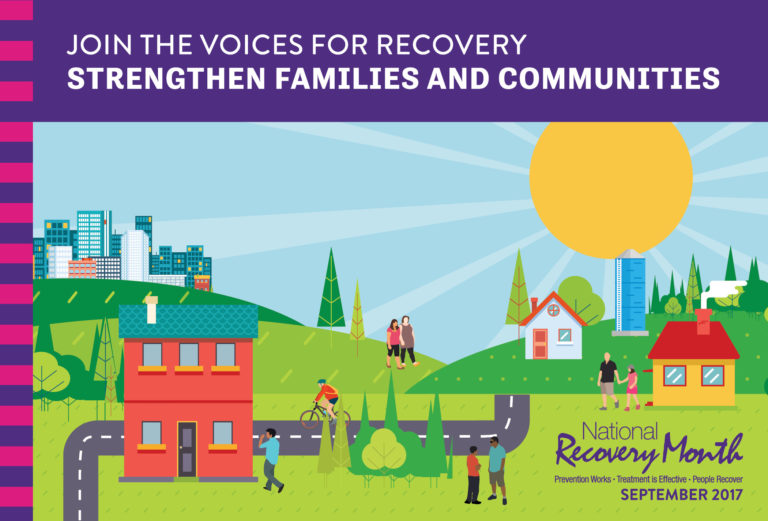
We are pleased to announce Dug and Heidi McGuirk of Palm Healthcare as special keynote speakers for this year’s Broward Recovery Month Event!
The Broward Recovery Event will honor special individuals in the community who are powerhouses for the recovery community.
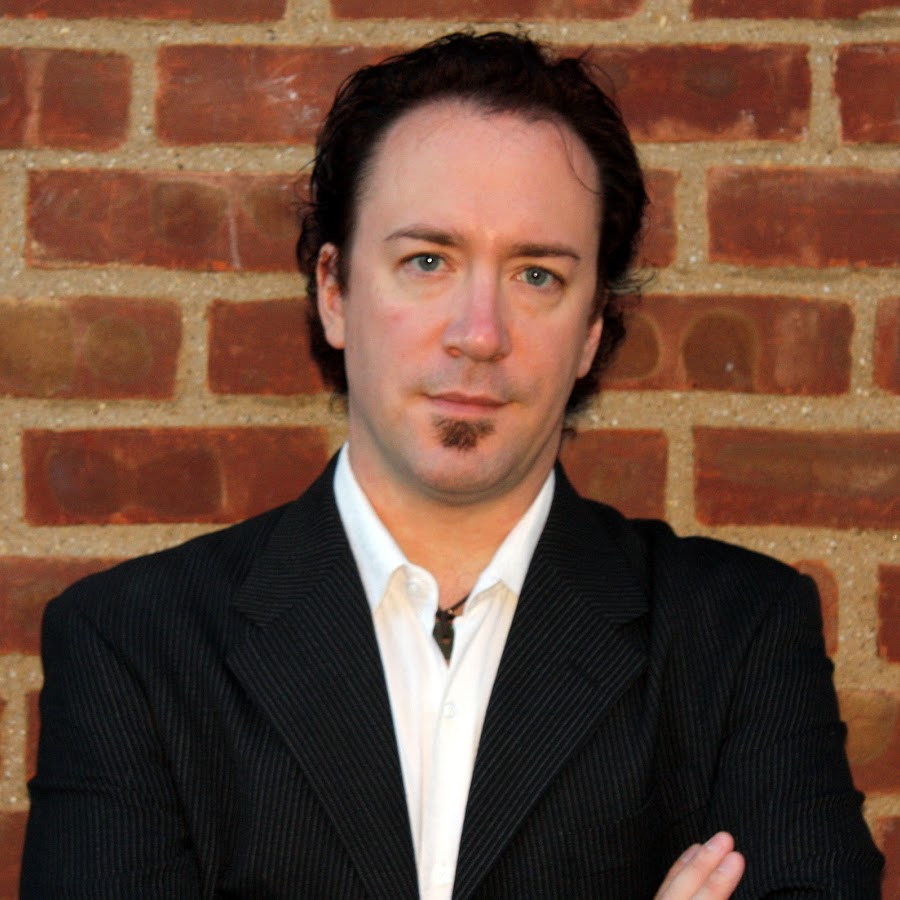 Dug McGuirk is an accomplished entrepreneur and inspirational speaker. As co-founder of Revolutionary Health, Dug is committed to transforming lives. Dug McGuirk is the VP of Training and Development for Palm Healthcare Company where he regularly teaches a variety of transformative classes.
Dug McGuirk is an accomplished entrepreneur and inspirational speaker. As co-founder of Revolutionary Health, Dug is committed to transforming lives. Dug McGuirk is the VP of Training and Development for Palm Healthcare Company where he regularly teaches a variety of transformative classes.
 Heidi McGuirk is an author, co-founder of Revolutionary Health, Master Relationship Coach and addiction professional who teaches several weekly classes at Palm Healthcare.She is the creator and CEO of Love Coach Heidi where she helps recovering co-dependent women learn how to love themselves first.
Heidi McGuirk is an author, co-founder of Revolutionary Health, Master Relationship Coach and addiction professional who teaches several weekly classes at Palm Healthcare.She is the creator and CEO of Love Coach Heidi where she helps recovering co-dependent women learn how to love themselves first.
Dug and Heidi both created an amazing family program for the families of addicted loved ones. The Family Program helps families navigate addiction and understand how to help their loved one instead of hurting them.
We would like to offer you the FREE GIFT of a checklist to help decipher if you are helping or hurting a loved one who is struggling with addiction.
Click for FREE GIFT
We encourage all to come out and support them in this year’s Broward Recovery Month event. Even if you are not familiar with the incredible work Dug and Heidi McGuirk do, you will gain so much from attending the event and hearing their words of inspiration and hope.
Here are the details:
Broward National Recovery Month Event:
When: September 9th from 11-3
Where: The War Memorial Museum
800 NE 8th St, Fort Lauderdale, FL 33304
What: Join special keynote speakers Dug and Heidi McGuirk for FREE food, fun, and inspiration.
This year’s theme for Recovery Month 2017 is Join the Voices for Recovery: Strengthen Families and Communities.
September marks the 27th anniversary of National Recovery Month. The purpose of National Recovery Month is to increase awareness and understanding of mental and substance use disorder and celebrate people who DO recover.
The 2017 theme highlights the value of family and community support. Recovery Month invites individuals in recovery and their family members to share their personal stories and successes to inspire and encourage others.
Broward Recovery Month will be an exciting, INSPIRING event for all to attend. You can make a difference by joining in the Recovery Month Effort.
Support is crucial when it comes to addiction recovery.
Events that support recovery help encourage and inspire those struggling with their addiction, as well as give an outlet to those who have had amazing success in recovery. These events were created to join the recovery community together and celebrate those who have achieved success in their journey.
Broward’s Recovery Month Celebration “honors outstanding individuals who have made significant contributions to helping people in our county remain sober.”
Overall, National Recovery Month helps instill a sense of belonging, safety, and security to the recovery community. This year, we encourage you to participate in events in your community that support addiction recovery. There are events happening nationwide for you to attend.
Whether you are new to recovery or have years of sobriety under your belt, everyone can benefit from attending major events like this. Families of addicted loved ones are strongly encouraged to attend because this year’s National Recovery Month specifically focuses on strengthening families. Families know more than anyone that addiction does not affect just the addict, it affects everyone around them too.
Millions of lives have been transformed through recovery. Often, these successes go unnoticed. Recovery Month is an excellent way for everyone to celebrate these accomplishments.
Addiction affects everyone, not just the addict. Therefore, if you or someone you know is currently struggling, please reach out. We want to help. Do not wait. Please call toll-free now.
CALL NOW 1-888-922-5398
by Sher Delva | Aug 4, 2017 | Addiction, Celebrity, Drug Abuse, Mental Health, Stigma, Therapy

Any James Franco Fans Out There?
James Franco recently opened up about what he calls his “addictive personality.” It turns out the actor/director has struggled with workaholism and mental health his entire life.
Franco is known for his eclectic resume, starring in films such as Milk, Spiderman, Spring Breakers and City by the Sea. He has appeared in television shows like Freaks and Geeks and General Hospital.
The interview, with Out magazine, was to promote his upcoming HBO series, The Deuce. Franco chatted with novelist Edmund White about some of the challenges he faced, and how he managed to overcome them.
Teenage Angst
Franco’s troubles start way back in his teen years. During this period, he was arrested for underage drinking, graffiti, and shoplifting, among other things. Reflecting on that time, Franco told the Guardian, “It was teen angst. I was uncomfortable in my own skin. I was shy.”
Franco found acting as a way to cope and passionately immersed himself in it. He found acting to be an excellent outlet for his personality type. However, soon acting “became everything” to the point where he did not even socialize.
After doing nothing but working, Franco says he realized he was depressed, isolated and lonely.
“I really threw myself into it, and that became everything, to the point where I didn’t even socialize. And then after, like, 10 years of that, at age 27, I realized, ‘Man, I’m so depressed. On the surface my life seems pretty good—I have a career and everything—but I feel isolated and lonely,’” he admits
To combat these feelings, he decided to switch gears and go to school at Brooklyn College. However, just like with acting, academics became the focus of all his attention, and he was obsessive with that as well.
“I threw myself into school, but again it was just this sort of running, running, running,” he says.
Franco told Out that it has been difficult to overcome his workaholism. One of the ways Franco has found helps is through participating in activities like surfing and taking classes at the International Dance Academy on Hollywood Boulevard.
He says these activities are part of his “therapy,” to help him overcome his work addiction.
“It’s a kind of therapy for me,” he said. “I’ve started a new chapter of my life. I was very work-addicted and addicted to other things—not substances, I got over that a long time ago—but I’ve recently changed my life, and this is part of my therapy.”
—
What is a Workaholic?
The concept of workaholism or workaholic behavior is very misunderstood. Often, people see these behaviors as positive qualities. You might even hear people joke about how they are a workaholic as a way of describing their passion for their job and solid work ethic.
The truth is workaholism is a real condition that can severely impact a person’s life. People addicted to work sacrifice their social life, families, and personal connections due to their obsessive desire to work.
But what’s the difference between a hard worker and a workaholic?
This is a very common question. A hard worker is someone who works very hard while at work and completes all of their tasks, yet still manages to find a healthy balance between work and personal responsibility. Of course, the occasional burst of overworking may occur to meet important deadlines however, this is not the norm.
Workaholics, on the other hand, are unable to make this differentiation. They view work as a source of adrenaline. They feel they must work harder than everyone else and put in more hours in order to succeed.
Workaholics achieve one goal and immediately set more ambitious ones. Staying at the same level of accomplishment is a failure and results in incredible distress. Workaholics sacrifice their health, family, and personal life in order to work.
Overall, workaholism is something rarely addressed, but like Franco, people who struggle with workaholism often need professional help. If you are struggling with workaholism, mental illness, or substance abuse, please reach out. You are not alone. Call now.
CALL NOW 1-888-922-5398





 Dug McGuirk is an accomplished entrepreneur and inspirational speaker. As co-founder of Revolutionary Health, Dug is committed to transforming lives. Dug McGuirk is the VP of Training and Development for Palm Healthcare Company where he regularly teaches a variety of transformative classes.
Dug McGuirk is an accomplished entrepreneur and inspirational speaker. As co-founder of Revolutionary Health, Dug is committed to transforming lives. Dug McGuirk is the VP of Training and Development for Palm Healthcare Company where he regularly teaches a variety of transformative classes. Heidi McGuirk is an author, co-founder of Revolutionary Health, Master Relationship Coach and addiction professional who teaches several weekly classes at Palm Healthcare.She is the creator and CEO of
Heidi McGuirk is an author, co-founder of Revolutionary Health, Master Relationship Coach and addiction professional who teaches several weekly classes at Palm Healthcare.She is the creator and CEO of 

